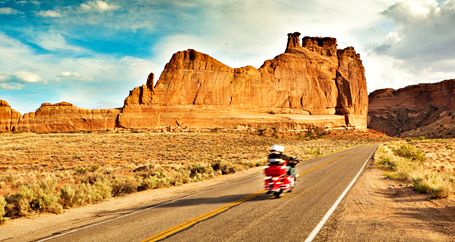It's a winter day. You've been on the road for 30 minutes — and it just stopped raining. Weird, you think, the tires aren't making that faint hum they usually do… Suddenly you feel your car drift sideways. There's a flash of white. When the dust settles, the airbag is in your lap. "I hit a patch of black ice," you tell the officer. "There was nothing I could do."
Or was there?
Almost all crashes are caused by human error, says Tim O'Neil, a professional driving instructor for 37 years who runs the Team O'Neil Rally School in Dalton, New Hampshire. "Instructors and safety experts are saying ‘crashes' instead of ‘accidents.' That's a good thing. We're getting away from notion that there's nothing drivers can do to help protect themselves. If a satellite falls out of the sky and lands on your roof, that's an accident," he says. "Outside of things like that, generally, someone makes an avoidable mistake."
Here are his tips for creating your best odds behind the wheel.
1. Drive by conditions, not speed limits
"The biggest mistake drivers make is not adjusting their speed to the conditions," O'Neil says. "If you look through accident reports, you'll see a common cause of crashes is ‘too much speed for conditions.'"
Most drivers know to slow down in low-grip situations (think: rain, snow, loose road surfaces), but under seemingly normal driving conditions, drivers can get too comfortable and lose track of what's happening outside the car.
Another major player? Overconfidence. "Cars accelerate better than ever in low-grip situations, and the high seating position in popular crossovers and S U Vs gives you a better view of the road," O'Neil says. "Everything seems okay, until you have to stop quickly and can't — or the vehicle starts to skid. Then you know you're driving too fast, but it's too late."
2. Assume this posture behind the wheel
React more quickly to sudden obstacles in the road, O'Neil says, by putting your body in the "command sitting position": Elbows bent 45–90 degrees — a little closer than most people are used to. And lots of bend in the leg; "You should still have some bend when you press the brake all the way," says O'Neil.
3. Keep your eyes trained on this — not that
The old rule about steering into a skid? There are eight different types of skids, and that rule only applies to some of those types, O'Neil says. In general, most skids can be avoided by matching your speed to road conditions, he says.
What happens when you do get into trouble? Most skids are the result of oversteering, O'Neil explains, describing how the back tires lose grip and the rear of the vehicle slides out. "When this happens, the front of the car is pointing at trees or a building or somewhere else you don't want to go." Drivers tend to focus on where the car is headed and overcorrect. "They slam on the brakes and stare at whatever it is they're heading for, thinking,‘Boy, this is going to hurt.'"
O'Neil is emphatic about what drivers should pay attention to instead: "Look where you want to go, and steer in that direction. Do not look at what you're about to hit. Focus on where you want to go, and then steer for it."
4. Prepare for a split-second decision
"When you've braked as hard as you can for as long as you can, and a crash is still imminent, consider plan B: In some situations, you can look away from the obstacle and steer around it," says O'Neil. Ask: Is this going to work? Are there any other options? "I aim to preprogram my students for certain situations—to train them to do things automatically. There's no time to hash it out when you're heading for a moose," says O'Neil, recalling the story of a former student who was confronted by just that. "A moose stepped into the road, and he whipped right around it before his passenger even realized what happened. That's the power of knowing what to do ahead of time," says O'Neil.
5. Avoid multi-tasking your car's brain
Making your car do too much at once also causes major crashes, according to O'Neil. "Let's say you're in a turn and realize you're going too fast. You let off the gas suddenly and hit the brake while still trying to turn. That's how people can lose control—too many inputs at once. You might be able to get away with it on a dry summer day, but in low-grip situations you're asking for trouble."
O'Neil tells his students, "As you put one input in, take another away." His examples? "Slow down as you approach a curve. Let off the brake and then turn. As you accelerate, unwind the steering."
Written by
The information contained in this page is provided for general informational purposes only. The information is provided by Farmers and while we endeavor to keep the information up to date and correct, we make no representations or warranties of any kind, express or implied, about the completeness, accuracy, reliability, suitability or availability with respect to this article or the information, products, services or related graphics, if any, contained in this article for any purpose. The information is not meant as professional or expert advice, and any reliance you place on such information is therefore strictly at your own risk.
Related articles



